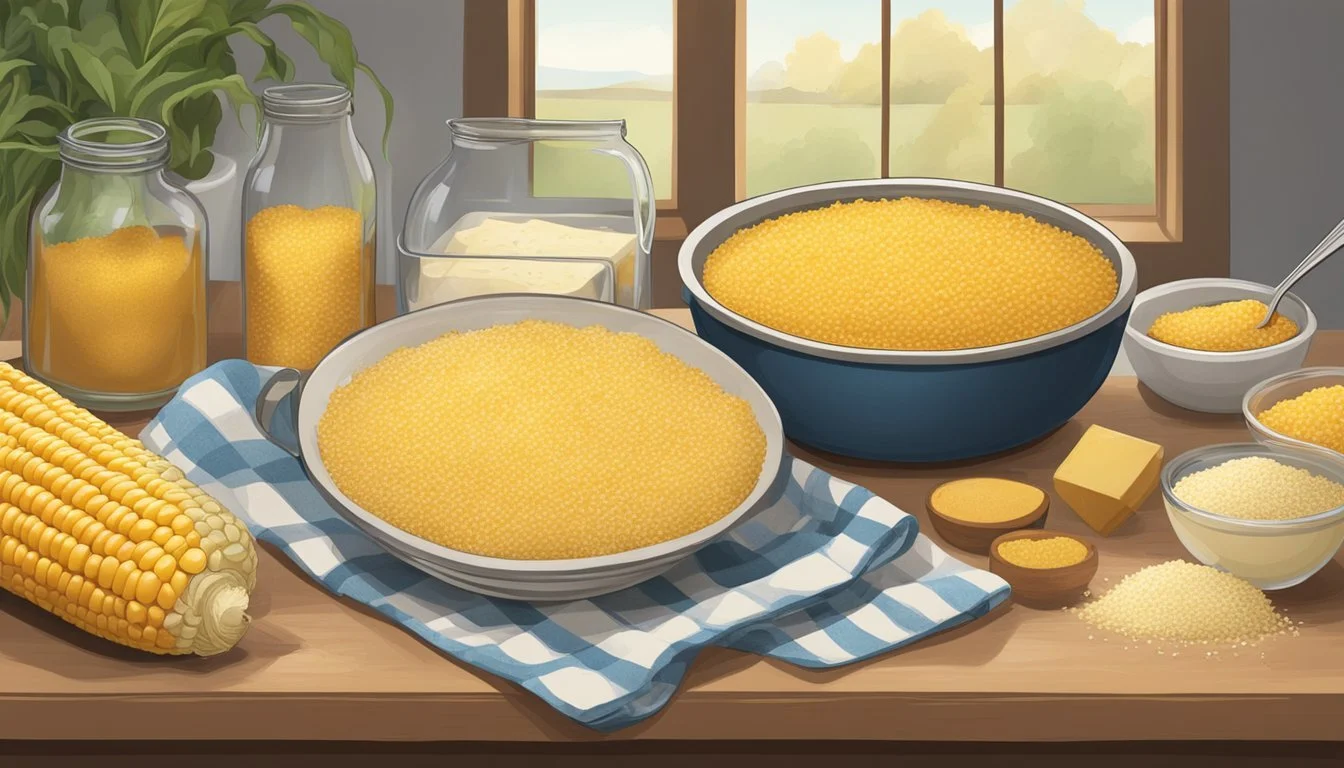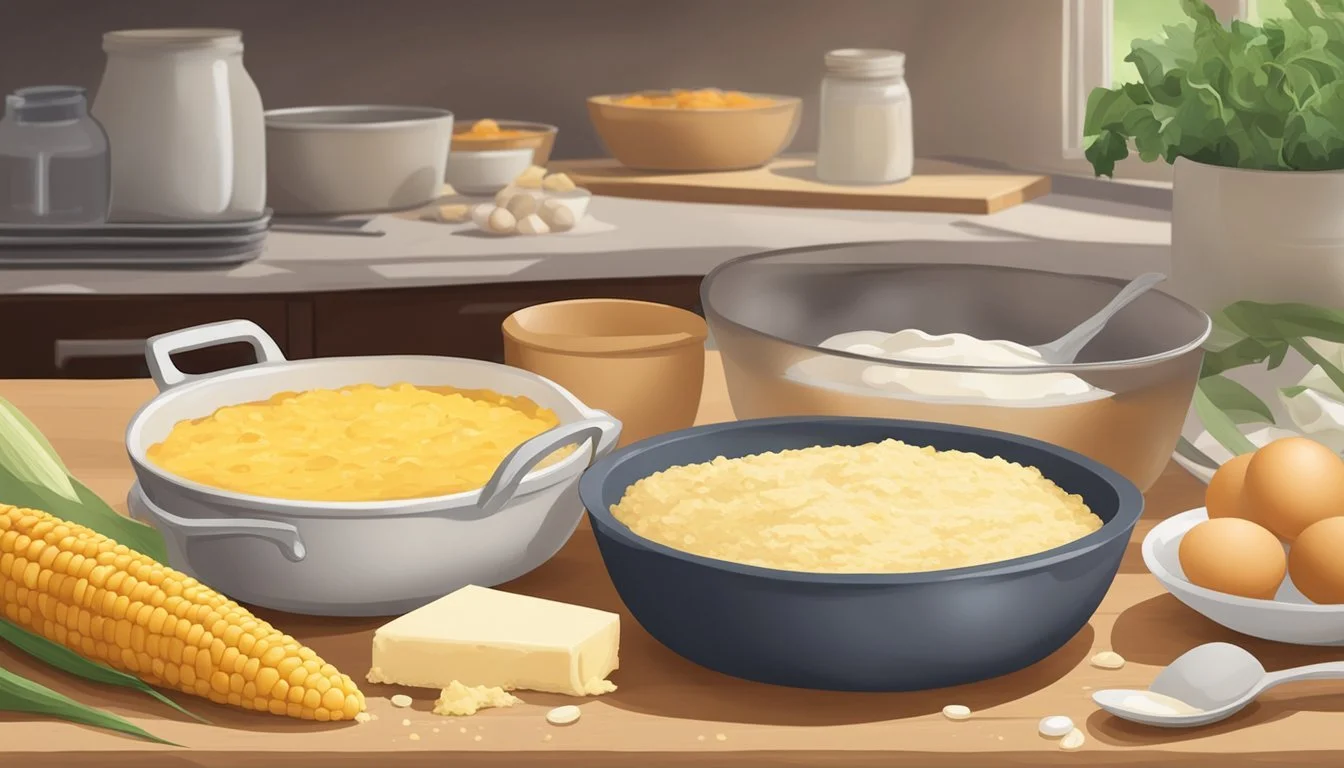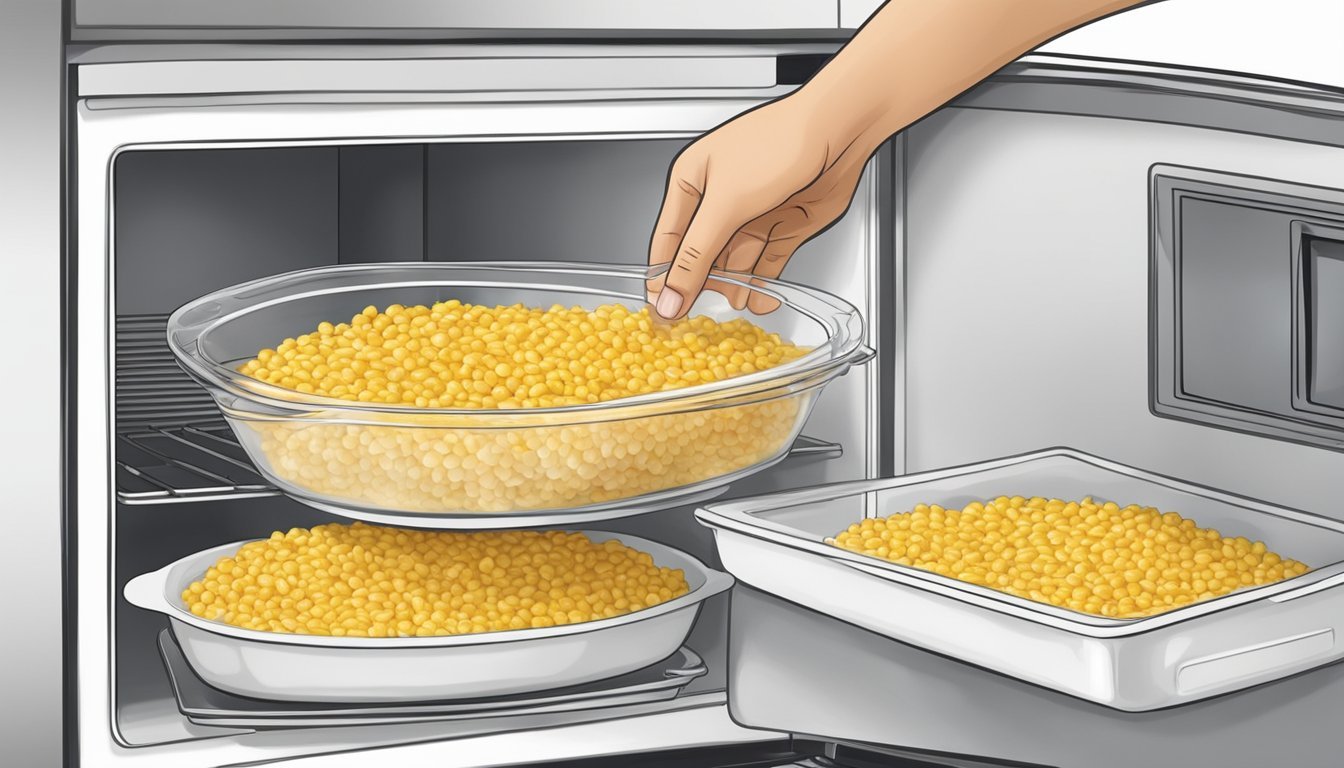Corn Casserole Substitutes
Best Alternative Ingredients and Recipes
Corn casserole, a beloved staple at any holiday meal or family gathering, holds a special place among comfort foods. Its creamy texture and golden-brown top make it an indulgent side dish that complements any main course. However, finding suitable corn casserole substitutes can be essential when dietary restrictions or ingredient availability comes into play.
For those avoiding corn due to allergies or preferences, there are various alternatives. Simple substitutions like using a mixture of creamed spinach and cornbread mix can provide a similar texture and flavor profile. Additionally, using zucchini or squash with a blend of cheese and seasoning can mimic the rich, comforting taste of traditional corn casserole.
Choosing the right substitute not only ensures that no one misses out on the festivities but also showcases the versatile nature of this classic side dish. Whether it’s for a holiday feast or a cozy family dinner, these substitutes maintain the essence of what makes corn casserole such a heartwarming addition to any meal.
Understanding Corn Casserole
Corn casserole is a classic comfort food often enjoyed at family gatherings and holiday meals. This dish combines several ingredients that create a creamy, flavorful experience.
Traditional Components
Corn casserole traditionally includes a mix of cornbread mix, creamed corn, and whole kernel corn. Other essential components are eggs, butter, and sour cream, which add richness and moisture to the dish. Some recipes incorporate sugar for a hint of sweetness, while cheese is sometimes included for a creamy texture. The balance of these ingredients is crucial for achieving the desired consistency and taste.
Role in Meals
Corn casserole serves as both a side dish and a main attraction in various meals. Its rich, comforting nature makes it an excellent complement to meat dishes like roast turkey, ham, or fried chicken. Often prepared during festive occasions, it complements a variety of vegetables and can be a feature at potlucks and family reunions. Its versatility allows it to fit comfortably into different culinary traditions.
Nutritional Information
A typical serving of corn casserole contains calories, fat, carbohydrates, and sodium. Due to the presence of butter and sour cream, it is relatively high in fat and calories. The inclusion of cornbread mix and sugar increases the carbohydrate content. Although delicious, it is important to be mindful of portion sizes, particularly for those monitoring their dietary intake.
Preparing Corn Casserole
Preparing corn casserole requires the right tools and attention to specific techniques. Ensuring the dish achieves a perfect golden brown finish involves careful preparation and baking methods.
Necessary Equipment
When making corn casserole, key equipment includes a baking dish and oven. Selecting a 9x13 inch baking dish is ideal for even cooking.
A mixing bowl and spoon are essential for combining ingredients. Before adding the mixture, cooking spray ensures easy release post-baking.
A whisk might be needed for blending ingredients smoothly. Additionally, having a toothpick on hand helps check for doneness.
It's crucial to preheat the oven to the correct temperature, typically around 350°F (175°C). This ensures the casserole cooks evenly from the start.
Mixing and Baking Techniques
Start by combining simple ingredients like whole kernel corn, creamed corn, and melted butter in a mixing bowl. Stir thoroughly to blend.
Once mixed, pour the batter into the prepared baking dish. Spread it evenly to ensure uniform baking.
Bake the casserole in the preheated oven for about 45-60 minutes. Check for doneness by inserting a toothpick into the center. If it comes out mostly clean, the casserole is ready.
Achieving a golden brown top indicates proper baking. If the casserole browns too quickly, cover it with foil to avoid burning. Let it cool slightly before serving for the best texture and flavor.
Substitutes for Corn Casserole Ingredients
When making corn casserole, you might need to find substitutes for various ingredients. This guide will outline alternatives for dairy, corn and cornbread mix, and proteins to ensure your dish remains delicious and accommodating to dietary restrictions or preferences.
Dairy Substitutes
For those who cannot consume dairy or prefer non-dairy options, there are numerous substitutes. Greek yogurt can replace sour cream, offering a tangy flavor while maintaining a creamy texture. It also adds a protein boost.
Vegan alternatives include using plain non-dairy yogurt for a similar texture or blending silken tofu to mimic the creaminess. Coconut milk or almond milk can substitute for heavy cream, though they will impart a subtle flavor difference.
Nutritional yeast is another option to give a cheesy taste without using actual cheese. It’s particularly useful for those following a vegan diet.
Corn and Cornbread Mix Alternatives
If you don’t have Jiffy Corn Muffin Mix or need a gluten-free option, make a homemade mix. Combine equal parts of flour (or gluten-free flour), cornmeal, a little sugar, baking powder, and salt.
Fresh corn can replace canned corn for a more natural and slightly sweeter taste. Simply shave kernels off the cob. Frozen corn is also suitable and often retains more nutrients than canned.
For creamed corn, blend whole corn with a small amount of milk or a non-dairy alternative. This ensures a similar consistency without preservatives found in store-bought options.
Protein Options for Variation
Adding protein to a corn casserole can turn it into a more filling meal. Ham pieces provide a savory and smoky element, complementing the sweetness of corn.
Vegetarian-friendly options include black beans or kidney beans, which add texture and protein without meat. Tofu or tempeh can also be used, cut into small pieces or crumbled for better integration into the dish.
For those following a vegan diet, chickpeas are an excellent substitute, offering both protein and a slight nutty flavor. Nutritional yeast again can be used to add a cheesy, umami taste without animal products.
These substitutes ensure your corn casserole is both tasty and adaptable to various dietary needs.
Techniques to Enhance Flavor and Texture
Enhancing the flavor and texture of corn casserole can turn a simple dish into a culinary delight. The following techniques can introduce new flavors and interesting textures.
Using Cheese and Spices
Cheddar cheese can be added to corn casserole for a rich, savory flavor. Incorporating shredded cheddar into the mixture before baking ensures even distribution. Creamy corn casseroles benefit from the sharpness of the cheese, balancing the sweetness of the corn.
Spices can elevate the dish. Adding paprika or cayenne pepper can create a subtle heat. Garlic powder and onion powder contribute depth, while fresh herbs like thyme or parsley provide freshness. A blend of cumin and chili powder can give a Southwestern twist.
Manipulating Texture
To achieve a desirable texture, consider using different forms of corn. Combining sweet corn and cream-style corn creates a varied mouthfeel. Incorporating a cornbread mix can add a subtle crunch on top.
Using milk or heavy cream can make the casserole creamy. Blending some corn with milk before adding it to the mixture achieves smooth consistency. For a chunkier texture, adding whole corn kernels is effective.
Breadcrumbs or crushed crackers sprinkled on top before baking add a crunchy finish and contrast the creaminess. This blend of textures makes each bite interesting.
Experimenting with these techniques can transform a basic corn casserole into a sophisticated, flavorful dish.
Storing and Reheating
Proper storage and reheating of corn casserole ensure that it remains delicious and safe to eat. Here’s how to manage leftovers, whether you store them in the refrigerator or freezer, and the best methods to reheat them.
Best Practices for Refrigeration
Leftovers should be stored in an airtight container to maintain freshness. Refrigerate the casserole within two hours of cooking to prevent bacterial growth.
A glass or metal pan works well for storage. If using a cast iron skillet, ensure it is properly seasoned to avoid rusting. Store the casserole in the fridge for up to 2-3 days. Before reheating, allow it to sit at room temperature for about 20-30 minutes.
Freezing and Thawing
For long-term storage, freezing is a great option. Portion the casserole into serving sizes using airtight containers or heavy-duty freezer bags.
Label each container with the date to keep track. To freeze, allow the casserole to cool completely. When ready to use, thaw the casserole in the refrigerator overnight. Quick-thawing in a microwave can compromise texture and flavor.
Reheating Methods
Oven reheating is preferred for maintaining texture. Preheat the oven to 350°F (175°C). Cover the casserole with aluminum foil to retain moisture and bake for 20-25 minutes.
For a slower method, a slow cooker can be used by setting it on low for 3-4 hours. If using a microwave, reheat portions on medium power in one-minute intervals, stirring in between for even heating. Always check the internal temperature reaches 165°F (74°C) to ensure food safety.
Reheating in a cast iron skillet can add a crisp crust but requires monitoring to avoid burning.
Creative Variations and Serving Suggestions
Enhancing corn casserole can be achieved through innovative variations and thoughtful serving suggestions. By incorporating seasonal elements and creative add-ins, this dish can easily transform into a show-stopper for any meal.
Holiday Specials
Corn casserole takes on new life during holidays such as Thanksgiving and Christmas. One way to elevate the dish is to blend corn pudding and dry cornbread mix, providing a unique texture and flavor combination. Adding green chilies can infuse a mild spice, fitting perfectly with the warm, comforting atmosphere of the holiday table.
For Thanksgiving, pair the casserole with classics like gravy, fried chicken, green bean casserole, and mashed potatoes. On Christmas, consider a more sophisticated twist by incorporating cornbread mix variations with ingredients like cranberries or nuts, adding a festive touch. These small adjustments can make the corn casserole a standout on any holiday menu.
Casserole Add-Ins
To create memorable variations, consider integrating additional components into the casserole mix. Green chilies, chopped onions, bell peppers, and mushrooms can introduce new flavors and layers. Cheese, such as sharp cheddar or Monterey Jack, can be mixed in for a rich, gooey texture.
For a more savory option, adding bacon bits or sausage can elevate the dish, making it more substantial and satisfying. This approach works well for potlucks or family dinners. Additionally, experimenting with different dry corn bread mix brands or homemade versions can tailor the dish to individual preferences.
These add-ins and variations not only enhance the dish but also provide a versatile base that can be customized to suit any occasion.





